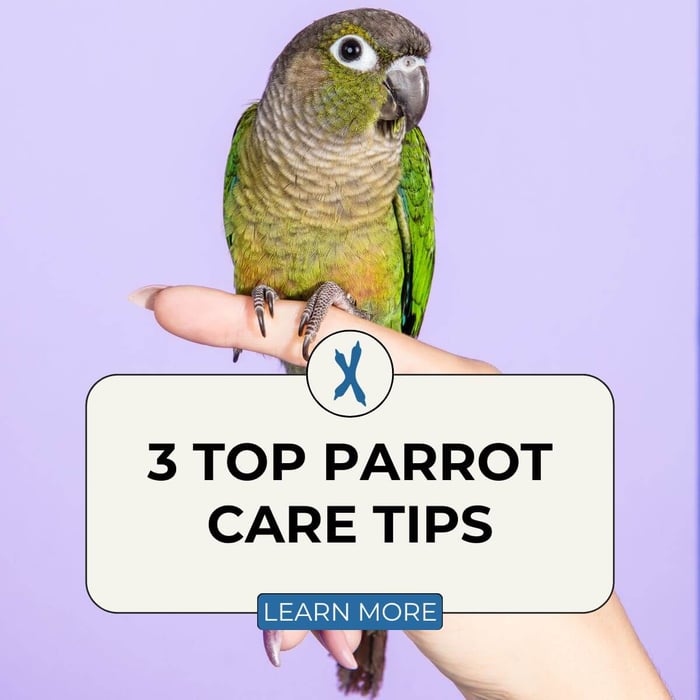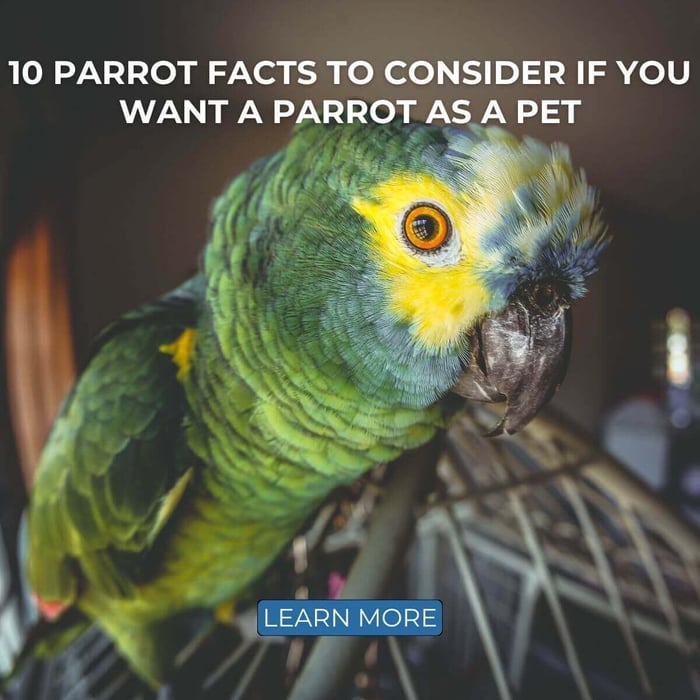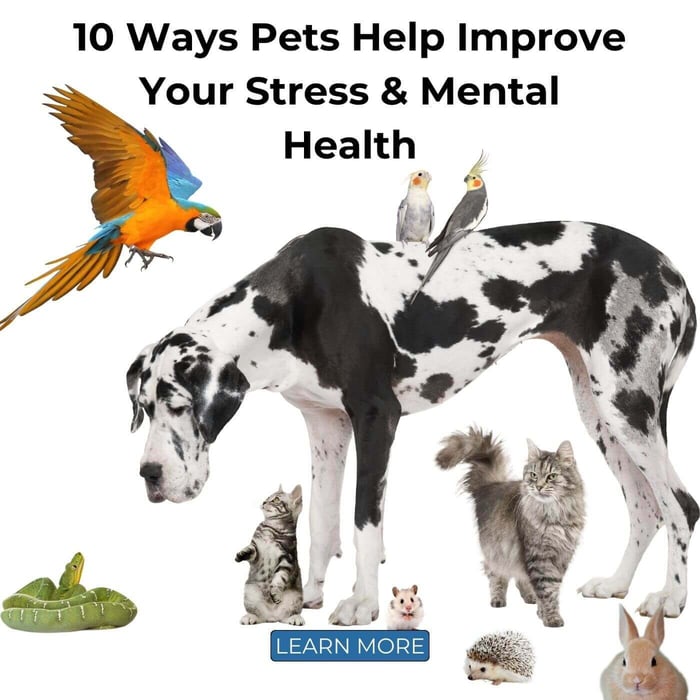How To Tell If Your Parrot is Stressed
Parrots, known for their intelligence, sociability, and vibrant personalities, require more than just maintenance; they need a loving, enriching environment tailored to their complex needs. Many parrot owners may not realize that when their parrot is stressed, it often stems from the very environment they are kept in, particularly their cages. By understanding and addressing the nuances of their habitat, owners can significantly improve the quality of life for these exquisite birds.
Understanding Parrot Stress

Stress in parrots can manifest in a multitude of ways, each signalling discomfort or dissatisfaction with their surroundings. Physical signs such as feather plucking or repetitive behaviours like pacing or head bobbing can indicate anxiety or boredom. When a parrot is stressed, it might become either unusually aggressive or withdrawn, which may include biting or retreating to a corner of the cage and refusing to come out. Emotionally, when a parrot is stressed, symptoms might be subtle but can include signs of depression, such as a lack of enthusiasm for food or activities they once enjoyed.
These signs are crucial for owners to recognize early. Parrots are adept at hiding their ailments, and by the time symptoms are noticeable, the parrot is stressed significantly.
The Cage as a Home
The cage for a parrot is not just a confinement space but its primary residence. Therefore, it should be as comfortable and stimulating as possible. The size of the cage is fundamental; too small a space can cause physical and psychological distress, leading to health issues like obesity from insufficient exercise or even behavioural problems stemming from frustration and boredom.
The placement of the cage also plays a pivotal role in whether your parrot is stressed. It should be located in a part of the house that strikes a balance between tranquillity and engagement. Too much isolation can make a parrot feel neglected and lonely, while too much noise and commotion can overwhelm it. A perfect spot might be a quiet corner of a living room where the family gathers but maintains a calm atmosphere.
Enhancements for Cage Life
To make a parrot’s cage a sanctuary, it must mimic their natural habitat to the greatest extent possible. This involves more than just physical space. The interior should include a variety of perches, each with different textures and thicknesses, to allow for natural foot exercise and movement.
Toys should not only be entertaining but also encourage natural behaviours such as foraging, chewing, and problem-solving to keep the parrot mentally engaged and physically active. Changing these toys and the layout of the cage regularly can help prevent the parrot from growing bored with its environment. Introducing new items periodically keeps their space exciting and new, which is vital for their mental well-being.

Dietary Considerations and Social Needs
A balanced diet is essential for maintaining the health and happiness of a parrot. This diet should include a variety of fresh fruits and vegetables, nuts, and high-quality pellets to provide a rich mix of nutrients. Moreover, presenting food in a way that mimics natural foraging behaviours can provide mental stimulation and reduce stress when a parrot is stressed.
Social interaction is equally crucial. Parrots are inherently social animals and thrive on interaction. Regular, positive interactions with their owners, including talking, training, and playing, can help alleviate feelings of isolation or boredom. For some parrots, having another bird as a companion can be beneficial, though careful introduction and monitoring are necessary to ensure they coexist peacefully.
Casozen No More Feather Plucking Natural Bird Remedy
Casozen is a natural remedy aimed at reducing stress and anxiety in birds, which are often underlying causes of feather plucking. The formulation typically includes ingredients known for their calming properties, such as:
- Herbal Extracts: Many calming remedies incorporate herbs like chamomile or lavender, which have been used traditionally to reduce anxiety and promote relaxation in both humans and animals.
- Amino Acids: Ingredients such as L-theanine, found in green tea, can help promote relaxation without causing drowsiness. These are often used to help manage stress in pets.
- Minerals and Vitamins: Supplements might also include minerals like magnesium, which play a role in nerve function and can help relax muscles and nerves.
These ingredients work together to help soothe the parrot, reducing the urge to engage in self-destructive behaviour like feather plucking. Owners are advised to consult with a veterinarian before starting any new treatment to ensure it’s suitable for their particular bird, especially considering potential interactions with other medications or specific health conditions.

Parrot Essentials Pet Remedy Parrot Calming Kit
The Pet Remedy Parrot Calming Kit from Parrot Essentials is another holistic approach to managing parrot stress. This kit typically includes a variety of products, such as:
- Calming Sprays: These can be used on the parrot's bedding, around the cage, or even in the air around the parrot. The spray usually contains a blend of essential oils and other natural ingredients that have a calming effect on birds.
- Diffusers: Similar to plug-in air fresheners, these devices release a constant supply of calming substances into the environment, helping to keep the parrot relaxed throughout the day.
- Wipes: For more direct application, especially when handling the bird or introducing new items to its environment, calming wipes can be used to apply a soothing agent directly to surfaces close to the parrot.
These kits are designed to create a more tranquil environment for the parrot, thereby reducing overall stress levels and helping to prevent stress-related behaviours. They are particularly useful for situations known to cause anxiety in parrots, such as changes in their environment, loud noises, or the introduction of new people or pets.
Best Practices and Considerations
When using natural calming solutions for parrots, it’s important to consult with an avian vet before starting any new treatment to ensure the safety and health of the bird. Monitoring the parrot’s behaviour closely after introducing any new calming solution is crucial, as some birds may respond differently to certain ingredients. These natural remedies should be part of a broader approach to managing stress in parrots, including environmental enrichment, proper diet, and regular social interaction.
Conclusion
Caring effectively for a parrot involves creating an environment that caters to their physical, mental, and emotional needs. By constructing a living space that reduces stress and promotes health, owners can ensure that their parrots live not just long lives but also happy and fulfilling ones. The key is to remain attentive, proactive and educated about the needs and behaviours of these complex birds.
This comprehensive guide aims to equip parrot owners with the knowledge and tools to create a nurturing and stimulating environment for their pets, ensuring that they remain vibrant, healthy, and content throughout their lives.




